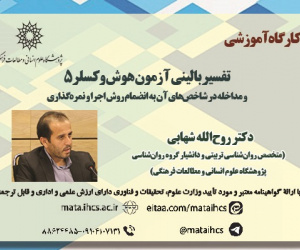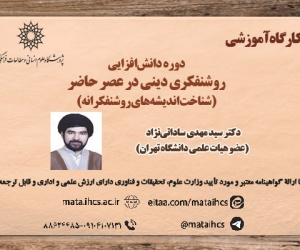برنامه ریزی استراتژیک توسعه گردشگری آبی در خوزستان (با تأکید بر سازه های آبی)
آرشیو
چکیده
زمینه و هدف: گردشگری یکی از مهم ترین عوامل مؤثر بر رشد اقتصادی و توسعه جوامع معاصر است. گردشگری را ابزاری برای تحرک اقتصاد حاشیه ای، ترویج و توسعه از طریق ایجاد اشتغال و درآمد تعریف کرده اند که در طول چند دهه گذشته به شدت گسترش یافته است. یکی از جذاب ترین شاخه های صنعت گردشگری که در سال های اخیر بیشتر مورد توجه قرار گرفته، گردشگری آبی است.روش بررسی: هدف این مطالعه بررسی، امکان سنجی و تحقق بخشی چشم انداز توسعه گردشگری و ارائه راهبردهای کلان و پتانسیل یابی سازه های آبی جهت توسعه گردشگری آبی است. نوع تحقیق حاضر ازلحاظ هدف، کاربردی و ازنظر ماهیت و روش، پیمایشی مبتنی بر مطالعات میدانی (پرسشنامه ای) است. جامعه آماری این پژوهش شامل 376 نفر از مدیران و متخصصین دانشگاهی در حوزه گردشگری، علوم آب و برنامه ریزی شهری است که با استفاده از روش نمونه گیری هدفمند انتخاب شده است. برای تحلیل علمی از مدل ترکیبی تحلیل استراتژیک SWOT و همچنین آزمون آماری T در نرم افزار SPSS استفاده شده است.یافته ها و نتیجه گیری: نتایج به دست آمده از تجزیه وتحلیل اطلاعات نشان می دهد که در وضع موجود بیشترین امکان تحقق پذیری مربوط به شاخص های زیست محیطی و اجتماعی- اقتصادی است؛ یافته های پژوهش بیانگر رابطه مثبت و معنادار بین گردشگری آبی و توسعه پایدار منطقه موردمطالعه است؛ چنانکه با سطح معناداری 000/0 و اطمینان 99 درصد؛ به ترتیب و به طور میانگین در شاخص های زیست محیطی (1/3)، اجتماعی- فرهنگی (9/2) و اقتصادی (9/2) بیشترین تأثیر مثبت و مطلوب، اما در بُعد شاخص های هیدرولیکی (8/2) کمترین تأثیر را داشته است. نتایج به دست آمده بر مبنای مدل استراتژیک سوات که عوامل داخلی؛ نقاط قوت و ضعف و عوامل خارجی؛ فرصت ها و تهدیدها می باشد. با توجه به امتیازبندی گویه های موجود در تحقیق مجموع امتیاز عوامل داخلی 83/2 (قوت ها 023/1 و ضعف ها 81/1) و عوامل خارجی 03/3 (فرصت ها 35/1 و تهدیدها 68/1) به دست آمده است؛ بنابراین بهترین استراتژی و راهبرد تحقق الگوی گردشگری آبی در منطقه موردمطالعه، راهبرد تهاجمی SO یا تقویت و استفاده از فرصت های بیرونی با تمرکز بر نقاط قوت می باشد. یافته ها این پژوهش می تواند برای طراحی سیاست های توسعه و گسترش برنامه ریزی در آینده استان خوزستان استفاده شود؛ و به تدوین شیوه نامه اجرایی فعالیت های گردشگری و تفریحی در زمینه منابع آب و تأسیسات آبی ابلاغ شده از سوی وزارت نیرو به دستگاه اجرایی مرتبط کمک کند.Strategic Planning of Water Tourism Development in Khuzestan (with Emphasis on Water Structures)
Background and Aim: Tourism is one of the most important factors affecting the economic growth and development of contemporary societies. Tourism has been defined as a tool for marginal economic mobility, promotion, and development through the creation of employment and income, which has been greatly expanded during the past few decades. One of the most attractive branches of the tourism industry that has received more attention in recent years is water tourism.Methods and Material: The purpose of this study is to investigate, feasibility and partially realize the vision of tourism development and to provide macro strategies and find the potential of water structures for the development of water tourism. The present type of research is applied in terms of purpose and in terms of nature and method, it is a survey based on field studies (questionnaire). The statistical population of this research includes 376 university managers and experts in the fields of tourism, water science, and urban planning, who were selected using the purposeful sampling method. For scientific analysis, the combined model of SWOT strategic analysis and the T-test in SPSS software has been used. the results obtained from the analysis of information show that in the current situation, the greatest possibility of realization is related to environmental and socio-economic indicators; The research findings show a positive and meaningful relationship between water tourism and sustainable development of the studied area; as with a significance level of 0.000 and 99% confidence; In order and on average, environmental (3.1), socio-cultural (2.9) and economic (2.9) indicators have the most positive and favorable impact, but hydraulic indicators (2.8) have the least impact. Has had the effect.Results and Discussion: The results obtained are based on the SWAT strategic model, which includes internal factors; strengths and weaknesses, and external factors; opportunities, and threats. According to the scoring of the items in the research, the total score of internal factors is 2.83 (strengths 1.023 and weaknesses 1.81) and external factors 3.03 (opportunities 1.35 and threats 1.68). Therefore, the best strategy for realizing the water tourism model in the study area is the aggressive strategy of SO or strengthening and using external opportunities with a focus on strengths. The findings of this research can be used to design development policies and expand planning for the future of Khuzestan province; and help to compile the executive guidelines for tourism and recreational activities in the field of water resources and water facilities notified by the Ministry of Energy to the relevant executive body.







